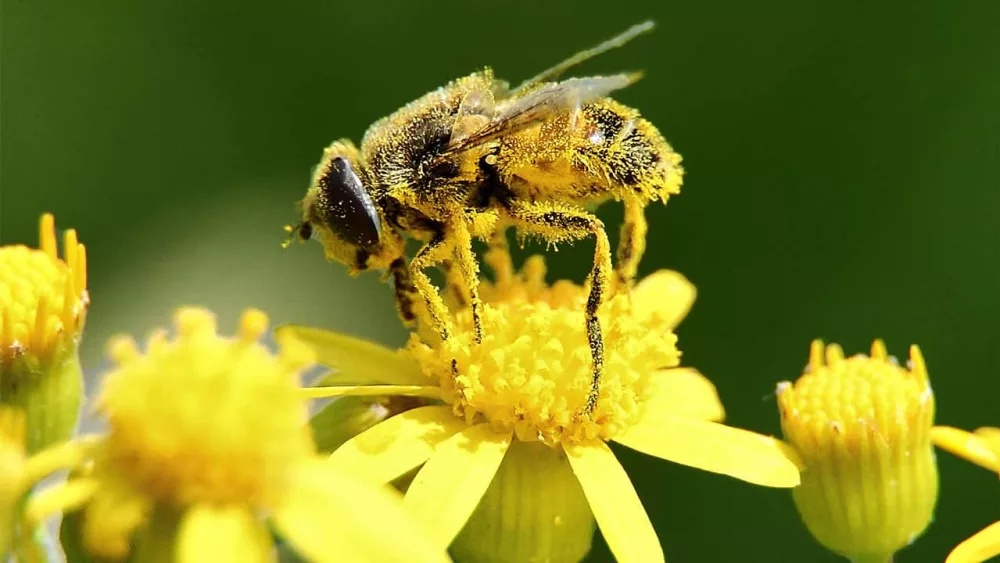Spring is right around the corner, which means allergy season is on its way. Some in the area are already being affected by the pollen in the air. Pollen is one of the most common allergens in the United States.
Over 67 million people suffer from allergies, and of those 67 million, 81% say they are allergic to pollen. As you may know, pollen is an airborne allergen, which is picked up and carried by the wind. Various trees, grasses and weeds create pollen, which can cause hay fever, irritate your sinus passages, cause rhinitis and irritate your eyes and skin.
As you may know, pollen is an airborne allergen, which is picked up and carried by the wind. Various trees, grasses and weeds create pollen, which can cause hay fever, irritate your sinus passages, cause rhinitis and irritate your eyes and skin.
The immune system protects your body against invading agents (like bacteria and viruses). In the case of allergies, your body reacts to a false alarm because airborne substances or other types of allergens that are usually not harmful. The immune system of the allergic person mistakenly considers allergens to be an invading agent, and tries to mobilize and attack. This is why those with allergies take medicine, to stop the release of histamine. One of the best ways to combat allergies is through preparation. Knowing what pollens you’re allergic to and treating the symptoms before they become overwhelming allows you to reduce the amount of impact they have on your life. Since the flowers haven’t bloomed a lot just yet, tree pollen is becoming more abundant. The pollen is coming mainly from Junipers, Maples, and Alders and is considered moderate at 5.6 across the region.
become overwhelming allows you to reduce the amount of impact they have on your life. Since the flowers haven’t bloomed a lot just yet, tree pollen is becoming more abundant. The pollen is coming mainly from Junipers, Maples, and Alders and is considered moderate at 5.6 across the region.
According to the Center for Disease Control, more than $18 billion is spent on nasal allergy health costs annually for more than 50 million Americans who suffer from symptoms. Some cities top the list for worst allergy conditions due to weather patterns and plants that grow in the area. The worst locations for allergies in the U.S. were ranked by the Allergy and Asthma Foundation of America during fall of 2016: 1. Jackson, Mississippi 2. Memphis, Tennessee 3. Syracuse, New York 4. Louisville, Kentucky 5. McAllen, Texas. Guess what? We live near two of those cities. While many Southeastern cities top the list, there are many factors that go into deciding the worst allergy locations around the country. The cities on the list were picked due to the length of allergy seasons. A longer warm season, with an earlier start to spring and a later end to warmth in fall, extends the growing season for allergen-producing plants.
We live near two of those cities. While many Southeastern cities top the list, there are many factors that go into deciding the worst allergy locations around the country. The cities on the list were picked due to the length of allergy seasons. A longer warm season, with an earlier start to spring and a later end to warmth in fall, extends the growing season for allergen-producing plants.
Plants that have large flowers usually need to have insects carry the relatively heavy pollen because they tend to stay put and cause fewer allergies. Low humidity, dry conditions and gentle breezes favor airborne pollen dispersal, experts agree. It’s best to wait until the later morning or evening to go outside due to pollen levels. In the afternoon winds pick up, so wind-pollinated plants cause the most problems for allergy sufferers. Rain helps to lower pollen levels, but rain also helps the plants grow and produce more pollen. However, a warm spell during budding season followed by very cold conditions can damage buds and reduce pollen production.
Allergy tests are available for many plant species and you should probably get tested. These pollens change over the course of the year. They are often flowering trees and plants in spring, and grasses and weeds in the summer and fall. Keep a diary when you notice your allergies flaring up. You can also record your condition on your Allergy Diary to keep track of the predominant pollens that may be causing your allergies. Feel free to comment on this post and be sure to hit the “Like” button at the end.






